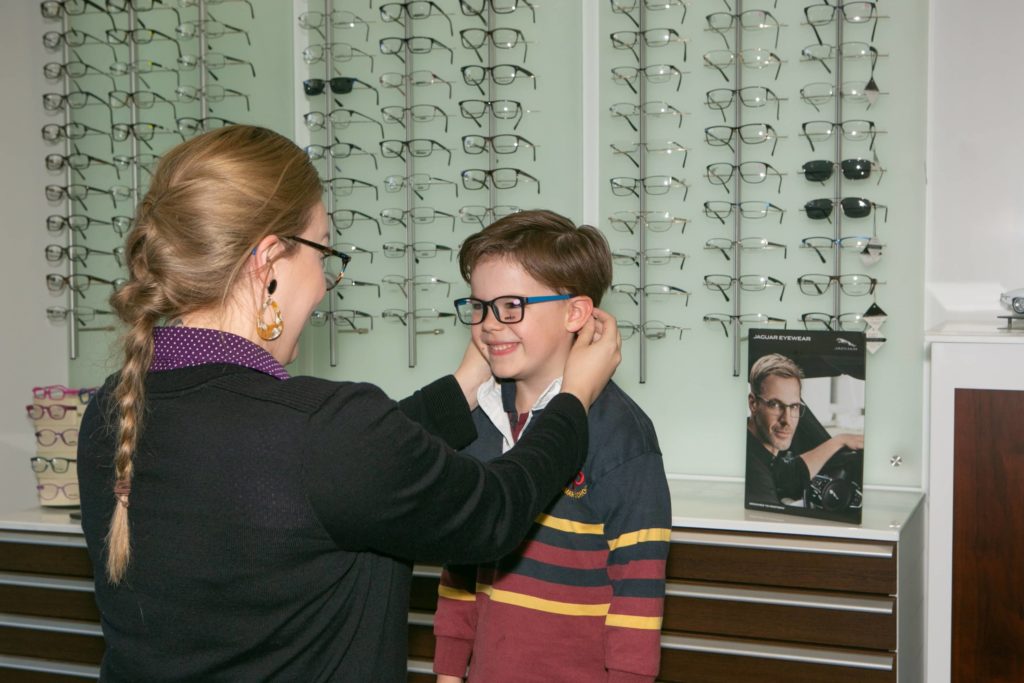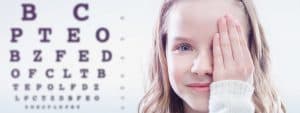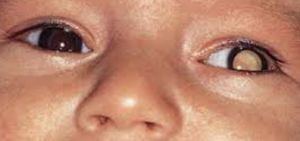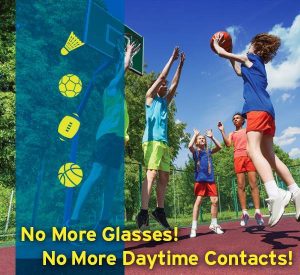Almost 20% of children under 18 have a diagnosed eye condition.
During a child’s early years it’s crucial to care for their eyes, which are rapidly growing and developing.
Diagnosing eye problems early can help minimize potential damage and makes treatment faster and more effective.
That’s why parents should know about the most common pediatric eye problems and their symptoms.
1. Refractive errors
The 3 most common refractive errors found in children are astigmatism (irregularly curved cornea), myopia (nearsightedness) and hyperopia (farsightedness). These conditions prevent light from focusing on the correct part of the retina, causing blurred vision.
Signs to watch for:
- Frequent squinting or head tilting
- Headache or eye strain after a child performs visually demanding activities
- Holding books or digital screens very close to the face
- Sitting very close to the computer or television
2. Amblyopia
Also known as lazy eye, amblyopia occurs when one eye is weaker than the other and doesn’t achieve normal visual acuity or function.
Amblyopia is difficult to diagnose since the child relies on their ‘good’ eye and may be unaware of their problem.
Signs to watch for:
- Difficulty reading/doing math/playing sports
- Difficulty with attention and focus
- Frequently closing one eye
- Frequent eye rubbing
- Head tilting
- Squinting
If you notice any of these signs in your child, contact an eye doctor near you.
3. Binocular vision dysfunction (BVD)
BVD is caused by the two eyes not working together, due to a misalignment between the two eyes.
Signs to watch for:
- Anxiety
- Dizziness
- Double vision
- Fatigue
- Headache
- Light sensitivity
- Motion sickness
- Stress
If you find that your child frequently suffers from any of the symptoms listed above, schedule an exam with an eye doctor that is trained and experienced in diagnosing and treating BVD.
4. Convergence insufficiency
Convergence insufficiency is a binocular vision condition that affects eye muscle coordination and near vision. It occurs when the eyes aren’t able to effectively work together to focus on a near object.
Signs to watch for:
- Attention and concentration difficulties
- Blurred vision
- Double vision
- Fatigue, especially when reading
- Headaches
- Homework avoidance
- Motion sickness or vertigo
- Reading below grade level
- Seeing words move or jump on the page
If you suspect your child has an eye condition, contact an eye doctor near you who can diagnose and treat the condition.
SEE RELATED: What Is Myopia?
5. Nystagmus
Nystagmus is a congenital or acquired condition characterized by quick, involuntary back-and-forth eye movements. Congenital nystagmus appears in the first few months of life, while acquired nystagmus appears after 6 months.
Signs to watch for: Eyes that repetitively and rapidly move from side to side, up and down, or in a circle.
6. Pediatric cataracts
Adults aren’t the only ones affected by cataracts.
An estimated 20,000-40,000 children are born with cataracts each year worldwide.
Cataracts occur when the usually clear lens of one or both eyes becomes clouded. It’s possible that a cataract can impair vision, depending on its position and intensity.
Signs to watch for:
- Difficulty recognizing faces and seeing objects
- Eyes that point in different directions
- Gray or white-colored pupil
- Nystagmus
7. Strabismus
Strabismus occurs when the eyes are turned, misaligned or “crossed.” If left untreated, it can lead to amblyopia and permanent vision loss.
An eye turn might be noticed soon after birth or even suddenly appear at about two years of age.
Signs to watch for:
- An eye that points inward, outward, upward or downward
- Excessive and frequent squinting, especially in bright light
- Head tilting, in an effort to align the eyes
Vision therapy can help
Vision therapy consists of personalized exercises aimed at developing visual skills so the eyes, visual system and brain are communicating correctly.
If your child is diagnosed with any of the above eye conditions, your eye doctor will likely recommend a personalized program of vision therapy.
LEARN MORE: Guide to Pediatric Eye Conditions
Schedule an appointment with an eye doctor for a comprehensive eye exam, and to discuss any questions you may have about treating your child’s eye condition.
Diagnosing eye problems in your child early can help minimize potential damage and allows treatment to be faster and more effective.









